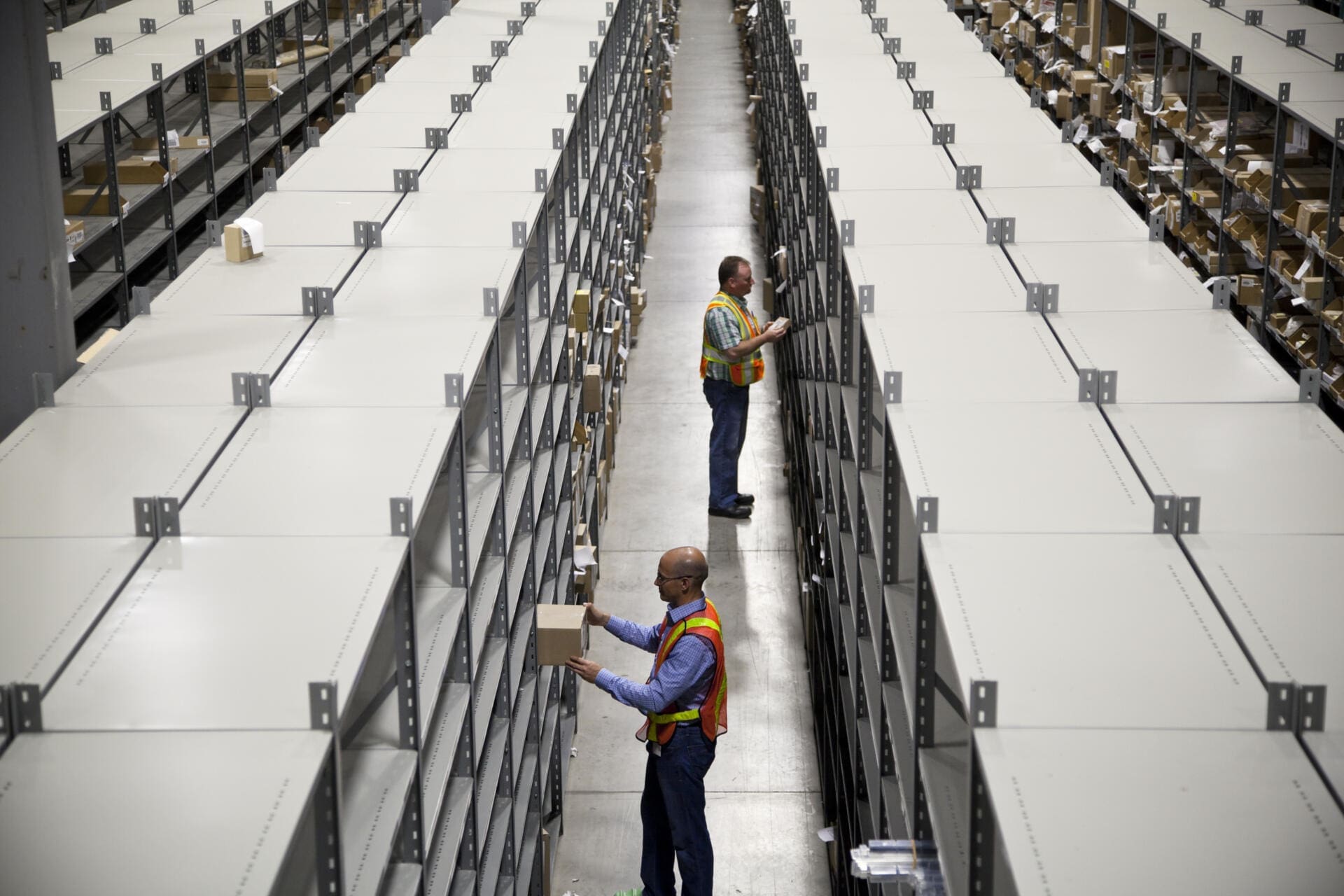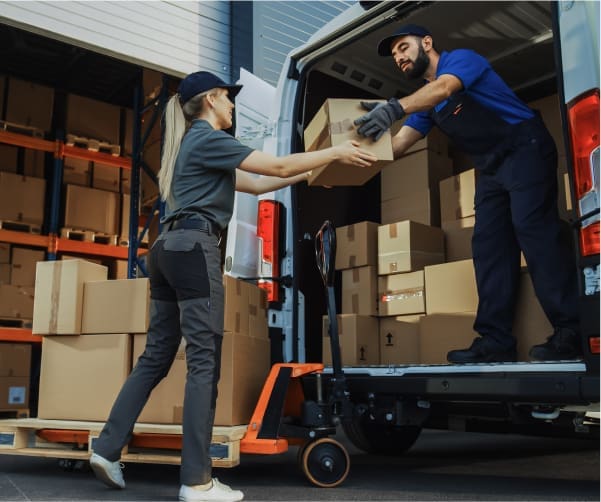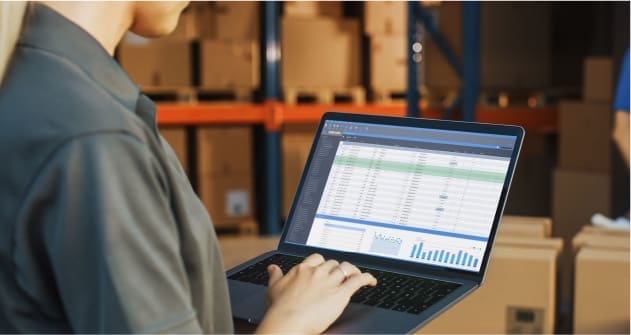In the ever-evolving world of e-commerce, staying ahead of the curve is crucial for success. As technology advances and consumer expectations continue to rise, businesses must adapt to the latest trends in e-commerce fulfillment. In this article, we will explore the key trends shaping the future of e-commerce fulfillment in 2024 and beyond. From automation and robotics to sustainability and personalization, we will delve into the strategies and innovations that will help businesses thrive in the competitive e-commerce landscape.
1. The Rise of Automation and Robotics in E-commerce Fulfillment
Automation and robotics are revolutionizing the e-commerce fulfillment industry. As businesses strive for greater efficiency and accuracy, the integration of automated systems and robots in warehouses and fulfillment centers is becoming increasingly prevalent. These technologies streamline operations, from picking and packing to inventory management, reducing costs and improving overall productivity.

In the coming years, businesses can expect to see further advancements in automation and robotics. Innovations such as autonomous mobile robots (AMRs) and robotic arms will play a significant role in optimizing fulfillment processes. These technologies will not only improve speed and accuracy but also enhance worker safety and reduce the risk of errors.
2. The Importance of Localization and Cross-Border Fulfillment
In today’s borderless e-commerce market, a cross-border strategy is crucial. In 2024, Direct-to-consumer brands are using a strategic combination of localization and southbound shipping using the Section 321 exemption to create a North American supply chain that creates efficiencies and saves money, without sacrificing the customer experience.
Localization
For U.S. based e-commerce brands, adding inventory to fulfillment centers in Canada offers the opportunity to expand distribution into a new market of 40+ million Canadian consumers. This approach allows brands to test international growth in a new, geographically close market. Plus, by localizing in Canada brands can deliver their products faster to Canadians with fewer shipping costs. Working with a Canadian 3PL also brings the advantage of working with a partner who intimately understands the unique rules, regulations, and processes of the Canadian wellness market. Once you have inventory situated in Canadian warehouses, you can ship eligible products southbound to U.S. e-commerce customers using the Section 321 exemption and save on duty and tariff costs.
L’article 321
Section 321 fulfillment is a cost-effective way for direct-to-consumer (DTC) brands to increase profit margins and save up to 20% in duty and tariff costs. Section 321 is an exemption in the Canada-U.S.-Mexico Agreement that allows small shipments valued under $800 USD to enter the U.S. duty-free. For DTC e-commerce retailers this offers an opportunity to reduce their cost per unit through waived or refunded import duties on items that enter Canada bound for U.S. recipients.
3. The Growing Importance of Third-Party Logistics (3PL) Services
As e-commerce continues to expand, the demand for efficient and reliable logistics services is on the rise. Many businesses are turning to third-party logistics providers (3PLs) to streamline their supply chain and enhance their fulfillment capabilities. prestataire de services logistiques en tierce parties offer a range of services, including d’entreposage, inventory management, order fulfillment, and shipping, allowing businesses to focus on their core competencies.

Partnering with a 3PL can provide businesses with access to advanced technologies, expertise, and a larger network of distribution centers. This enables them to scale their operations, reduce costs, and improve customer satisfaction. In 2024 and beyond, businesses will increasingly rely on 3PL services to meet the growing demands of e-commerce fulfillment trends.
4. The Continued Growth of Omnichannel Retail and E-commerce Fulfillment
Omnichannel retail, which integrates online and offline sales channels, has become the new norm in the e-commerce industry. Customers expect a seamless shopping experience across various touchpoints, including websites, mobile apps, social media, and physical stores. To meet these expectations, businesses must adopt a holistic approach to e-commerce fulfillment.

In 2024, we can expect to see further advancements in omnichannel fulfillment strategies. Businesses will invest in technologies that enable real-time inventory visibility, order tracking, and flexible fulfillment options such as buy online, pick up in-store (BOPIS) and ship-from-store. By leveraging the power of omnichannel retail, businesses can provide customers with a convenient and personalized shopping experience.
5. The Shift Towards Sustainable E-commerce Fulfillment Practices
Sustainability is no longer just a buzzword; it has become a core focus for businesses across industries. In e-commerce fulfillment, the adoption of sustainable practices is gaining momentum. Businesses are increasingly incorporating eco-friendly packaging materials, optimizing shipping routes to reduce carbon emissions, and implementing recycling and waste reduction initiatives.
In 2024, businesses will continue to prioritize sustainability in their e-commerce fulfillment practices. Customers are becoming more conscious of the environmental impact of their purchases, and they expect businesses to do their part in promoting sustainability. By adopting sustainable practices, businesses can not only meet customer expectations but also contribute to a greener future.
6. The Power of Personalization in E-commerce Fulfillment
Personalization is becoming a key differentiator in e-commerce fulfillment trends. Customers expect tailored experiences, from customized packaging to personalized product recommendations. Businesses that can deliver personalized experiences will stand out in the crowded e-commerce landscape.
In 2024, businesses will leverage technologies such as artificial intelligence (AI) and machine learning (ML) to enhance personalization in e-commerce fulfillment. These technologies enable businesses to analyze customer data and preferences, allowing them to offer personalized product recommendations, targeted marketing campaigns, and customized packaging options. By delivering personalized experiences, businesses can build stronger customer relationships and drive repeat purchases.
7. The Importance of Efficient and Transparent Shipping Processes
Efficient and transparent shipping processes are critical to customer satisfaction in e-commerce fulfillment. Customers expect fast and reliable delivery, along with real-time tracking updates. Businesses must invest in technologies and partnerships that enable seamless shipping processes and provide customers with clear visibility into the status of their orders.

In 2024, businesses will continue to prioritize fast and convenient shipping options. Same-day and next-day delivery will become more common, and businesses will explore innovative last-mile delivery solutions such as drone delivery and crowd-shipping. By offering efficient and transparent shipping processes, businesses can meet customer expectations and differentiate themselves from competitors.
8. The Integration of Emerging Technologies in E-commerce Fulfillment
Emerging technologies such as augmented reality (AR) and voice-enabled search will play a significant role in e-commerce fulfillment in the coming years. AR can enhance the customer experience by allowing customers to visualize products in their own environment before making a purchase. Voice-enabled search, powered by virtual assistants like Siri and Alexa, will enable customers to find and purchase products using voice commands.
In 2024, businesses will explore the integration of these technologies into their e-commerce fulfillment strategies. By embracing emerging technologies, businesses can create immersive shopping experiences and cater to the evolving preferences of tech-savvy customers.
9. The Role of Data Analytics in Optimizing E-commerce Fulfillment
Data analytics will continue to play a crucial role in optimizing e-commerce fulfillment processes. By analyzing data on customer behavior, inventory levels, and order patterns, businesses can make informed decisions, streamline operations, and improve overall efficiency.

In 2024, businesses will invest in advanced data analytics tools and technologies to gain deeper insights into their e-commerce fulfillment operations. Predictive analytics and machine learning algorithms will help businesses forecast demand, optimize inventory levels, and identify areas for improvement. By harnessing the power of data analytics, businesses can stay agile and make data-driven decisions to drive growth.
10. The Importance of Strong Partnerships in E-commerce Fulfillment
In the complex world of e-commerce fulfillment, partnerships play a crucial role in success. Building strong relationships with suppliers, logistics providers, and technology partners is essential for efficient and reliable fulfillment operations.
In 2024, businesses will continue to prioritize strong partnerships in e-commerce fulfillment. Collaborative relationships with suppliers will ensure a steady supply of high-quality products. Strategic partnerships with logistics providers will enable businesses to optimize shipping and delivery processes. Technology partnerships will provide businesses with access to innovative tools and solutions to enhance their e-commerce fulfillment capabilities.
11. The Role of 3PL E-commerce Fulfillment Partners in Success
As e-commerce fulfillment becomes increasingly complex, businesses can benefit from partnering with experienced 3PL e-commerce fulfillment providers. These partners offer expertise in supply chain management, warehouse operations, and shipping logistics, allowing businesses to focus on their core competencies.

In 2024, businesses will rely on 3PL e-commerce fulfillment partners to navigate the ever-changing landscape of e-commerce. These partners will provide scalable solutions, advanced technologies, and industry insights to help businesses thrive in the competitive e-commerce market.
Conclusion
The future of e-commerce fulfillment is filled with exciting opportunities and challenges. By embracing automation and robotics, prioritizing sustainability, delivering personalized experiences, and leveraging emerging technologies, businesses can position themselves for success in 2024 and beyond. Strong partnerships, data-driven insights, and a customer-centric approach will be crucial in navigating the evolving landscape of e-commerce fulfillment. As businesses adapt to the changing expectations of consumers, they will be well-equipped to thrive in the competitive e-commerce market.
Connect with SCI today to discover how our e-commerce fulfillment services and 3PL expertise can help your business thrive in the future of e-commerce fulfillment.